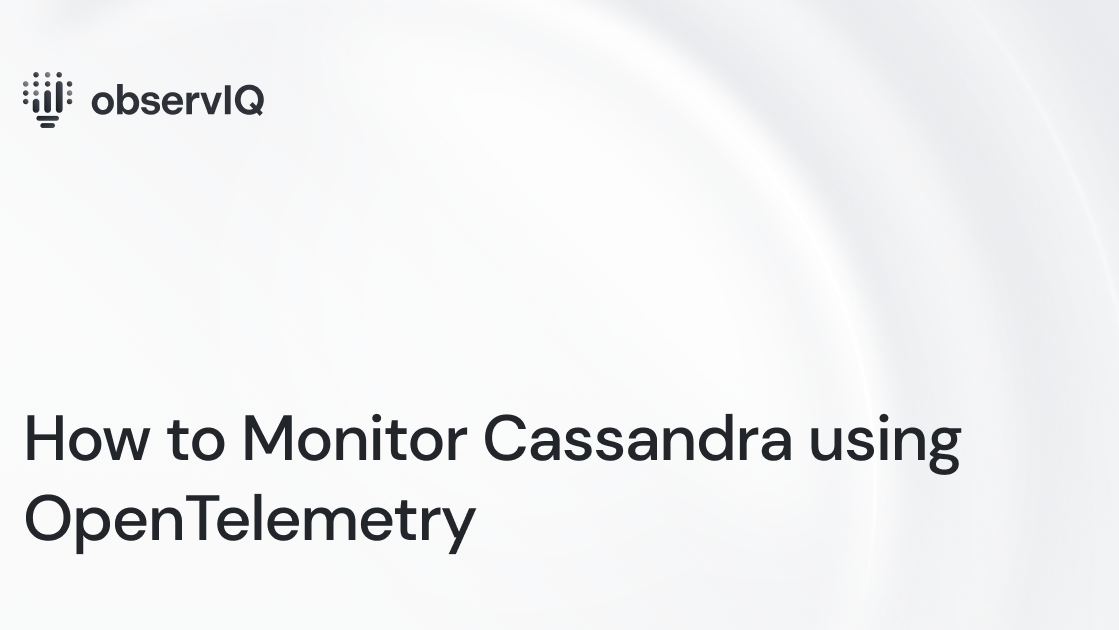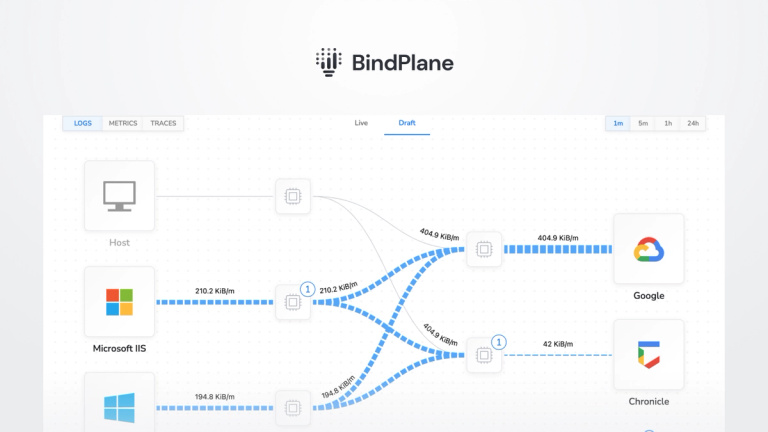How to Monitor Cassandra using OpenTelemetry

We are constantly working on contributing monitoring support for various sources; the latest in that line is support for Cassandra monitoring using the OpenTelemetry collector. If you are as excited as we are, take a look at the details of this support in OpenTelemetry’s repo.
The best part is that this receiver works with any OpenTelemetry Collector, including the OpenTelemetry Collector and observIQ’s distribution of the collector.
In this post, we take you through the steps to set up the JMX receiver with observIQ’s distribution of the OpenTelemetry Collector and send out the metrics to New Relic.
What signals matter?
Performance metrics are the most important to monitor for Cassandra. Here’s a list of signals to keep track of:
Availability of resources:
Monitoring the physical resources and their utilization is critical to Cassandra’s performance. Standard JVM metrics, such as memory usage, thread count, garbage collection, etc., are good to monitor. If there’s a decrease in the computing resources, the Cassandra database’s performance will be affected.
Volume of client requests:
As with monitoring other databases, monitoring the time taken to send, receive, and fulfill requests is necessary. The volume of requests is also an indicator of unforeseen spikes in traffic, possibly an issue with the application/ database.
Latency:
Latency is a critical metric to monitor for Cassandra databases. Continuous monitoring helps identify performance issues and latency issues originating from a cluster. Values of read and write requests are monitored to create a holistic view of execution speed.
Related Content: How to Install and Configure an OpenTelemetry Collector
Configuring the JMX metrics receiver
After the installation, the config file for the collector can be found at:
- C:\Program Files\observIQ OpenTelemetry Collector\config.yaml (Windows)
- /opt/observiq-otel-collector/config.yaml(Linux)
The first step is building the receiver’s configuration:
- We are using the JMX receiver to gather Cassandra metrics. The jar_path attribute lets you specify the path to the jar file, which facilitates gathering Cassandra metrics using the JMX receiver. This file path is created automatically when observIQ’s distribution of the OpenTelemetry Collector is installed.
- Set the IP address and port for the system from which the metrics are gathered as the endpoint.
- When we connect to JMX, there are different categories of metrics; the Cassandra metrics and JVM metrics are the ones that this configuration intends to scrape. This target_system attribute specifies that.
- Set the time interval for fetching the metrics for the collection_interval attribute. The default value for this parameter is 10s. However, if exporting metrics to New Relic, this value is set to 60s by default.
- The Properties attribute allows you to set arbitrary attributes. For instance, if you are configuring multiple JMX receivers to collect metrics from many Cassandra servers, this attribute will enable you to set the unique IP addresses for each endpoint system. So that you know, this is not the only use of the properties option.
Related Content: Configuration Management in BindPlane OP
1receivers:
2 jmx:
3 jar_path: /opt/opentelemetry-java-contrib-jmx-metrics.jar
4 endpoint: localhost:9000
5 target_system: Cassandra,jvm
6 collection_interval: 60s
7 properties:
8 # Attribute 'endpoint' will be used for generic_node's node_id field.
9 otel.resource.attributes: endpoint=localhost:9000The next step is to configure the processors:
- Use the resourcedetection processor to create an identifier value for each Cassandra instance from which the metrics are scraped.
- Add the batch processor to bundle the metrics from multiple receivers. We highly recommend using this processor in the configuration, especially for the benefit of the collector's logging component. If you would like to learn more about this processor check the documentation.
1processors:
2 resourcedetection:
3 detectors: ["system"]
4 system:
5 hostname_sources: ["os"]
6
7 batch:Finally, as shown below, we’ll set up a destination for exporting the metrics.
You can check the configuration for your preferred destination from OpenTelemetry’s documentation here.
1exporters:
2 otlp:
3 endpoint: https://otlp.nr-data.net:443
4 headers:
5 api-key: 00000-00000-00000
6 tls:
7 insecure: falseSet up the pipeline.
1service:
2 pipelines:
3 metrics:
4 receivers:
5 - jmx
6 processors:
7 - resourcedetection
8 - resourceattributetransposer
9 - resource
10 - batch
11 exporters:
12 - otlpViewing the metrics collected
Based on the config detailed above, the JMX metrics gatherer scrapes the following metrics and exports them to the destination.
observIQ’s distribution is a game-changer for companies looking to implement the OpenTelemetry standards. The single-line installer, seamlessly integrated receivers, exporter, and processor pool make working with this collector simple. Follow this space to keep up with all our future posts and simplified configurations for various sources. For questions, requests, and suggestions, contact our support team at support@observIQ.com.



